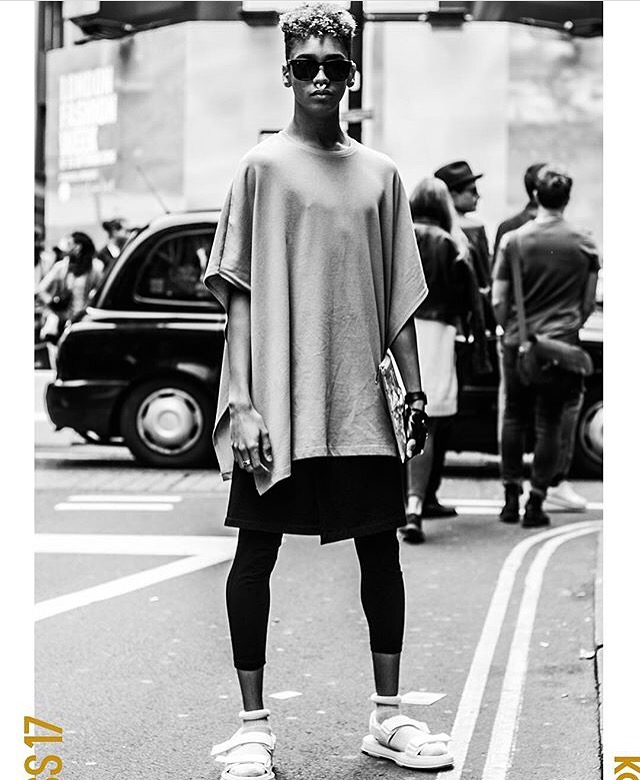Fashion, since the 1970’s, has been in a turbulent evolution as male icons like Bowie and Prince were adorning themselves with feminine shapes, patterns and colours, and were praised and criticised for their ability to bravely wear stereotypically women’s clothes. Since then, designers have been bold in transforming the runway looks for men into androgynous new styles. The problem with this is it’s change, and generally people do not like change. In more modern context, rap legend Young Thug is at the centre of gender ambiguity controversy for his love of women’s clothes and the creative monopoly this versatility brings to his outfits. Quoted as having a wardrobe of ‘80% women’s clothes’, this goes against the extreme masculinity, aggression and unspoken rules of conduct within rap culture. This constant battle between the freedom to express and the need to comply exists in everybody, but is subsequently harder for individuals of a certain background or social group.
Another brilliant example is Jaden Smith. The 18 year old, with one of the most memorable and individual styles in fashion at the moment, featured in Louis Vuitton’s womenswear campaign. Just his presence alone brings the word ‘genderless’ toward the collection, showing the versatility of the brand’s scope as well as its inexhaustible ability to keep people interested in what their doing, be it a good or bad response, it made headlines and ‘rocked’ the world. In the fashion industry, this is nothing new. Many campaigns now are become more gender neutral and doesn’t register as shocking or new. But for such a large and commercialised brand to do this pushed the direction for less gender separated clothing. By appearing in a head to toe LV womenswear outfit, it showed the transferable nature of the fashion from a female to male model, accentuating the androgynous style of a lot of modern fashion houses.
Gucci’s AW16 and SS17 collections were also very unbiased when it came to what male and female models wore down the catwalk, providing a glimpse at why separate men’s and women’s fashion weeks may become unnecessary because of this lack of barrier to what men and women can wear.
Even upon browsing through magazines like GQ shows us many of the extraordinary campaigns featuring feminine male models dressing in clothes that are hard to identify and either men’s or women’s. Having this culture and ideal about the way men are ‘socially allowed’ to dress means we as a society are restricting our expressive ability and limiting the choice and options to flourish our wardrobes with. But with a more positive and empowering attitude to gender ambiguity in clothing, it will make the general available fashion much more diverse and interesting, giving individuals the chance to become a more defined and creative version of themselves.


